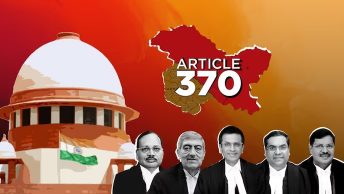(As part of our blog round-table book discussion, this is the first of the substantive responses to Julia Stephen’s Governing Islam: Law, Empire and Secularism in South Asia, by Professor Zubair Abbasi.)
Crisis of Secularism or Paradox of Governance?
In this short note, I first summarize the key themes of the Governing Islam: Law, Empire, and Secularism, and then reflect on them within the context of Pakistan, particularly with reference to the application of Islamic law.
Part I
Brief Summary
This book traces the transplantation of modern secular governance in South Asia from western liberal democracies by means of a colonial enterprise. It investigates the core promises of this governance experiment, i.e. protection of women and reduction of communal violence, only to conclude that it did not succeed in fulfilling them. (p 187).
Julia Stephens contends that colonial governance did not merely fail to fulfill its promises, it did the exact opposite. It, on the one hand, transformed patriarchal South Asian households into primary sites of female exploitation through a complicated mix of customs, penal sanctions, and labor laws. And, on the other hand, its policy of non-interference in ritual practices left local communities without any mechanism of internal governance – a process which fueled communal discord, rather than communal harmony.
By analyzing four landmark judgments and one statute, the author exposes internal contradictions in the structure of colonial governance, which was built on the binaries of reason/religion, economy/family, and state/community. She presents historical evidence to show that the theoretical binaries constructed by the colonial administrators fell apart when they interacted with practical realities.
The Calcutta landed lady Shumsoonnissa’s case exposed the twin binaries of family/property and religious/secular as the dispute intricately enmeshed religious personal law with colonial legal regime of transfer of property and procedural laws of colonial judiciary. Similarly, the inheritance dispute of a dancing girl’s estate in the case Ghasiti v Umrao Jan revealed the paradoxical treatment of customary practices by the colonial judges and civil servants, who otherwise accommodated custom as a concession to Indian traditions as an exception to their general policy of legal uniformity. The third judgment in Fazl Karim v Maula Baksh, regarding the removal of a prayer-leader (imam), highlighted the colonial policy of non-interference in religious rituals. The fourth case involved the murder of a Hindu publisher Rajpal by a Muslim youth for insulting the Prophet Muhammad. It led to the insertion of section 295A into the Indian Penal Code 1860 to protect religious sensitivities of Muslims by criminalizing religious insults.
The author’s analysis of the historical context of the promulgation of the Muslim Personal Law (Shariat) Application Act 1937 exposes the failed promise of the alternative model of governance which was based on the claim of the social justice of Islam. The Act promised to provide inheritance rights to Muslim women, but it strategically excluded agricultural land from its ambit and made its application optional for Muslims who could voluntarily sign a declaration that would bind future generation to apply Islamic inheritance law. She extends her exploration of ‘alternatives’ to colonial secular governance by surveying the proposals of Islamic socialism and Islamic economy which did not find any place in Pakistan—a ‘laboratory of applied Islam’.
The above is a very brief summary of the main themes of the book. This summary, however, does not capture a number of insights presented in the book. The author not only provides a revisionist account of the formation of personal law as a legal category, but she also challenges a number of orthodoxies regarding colonial governance in British India. In the following section, I pick some insights from the book and relate them to contemporary ‘governance of Islam’ in Pakistan to assess the continuities and changes of ‘colonial governance’.
Part II
Reflections on Governing Islam in the Context of Pakistan
While Governing Islam exposes how ‘secular colonial governance’ in fact disempowered women and aggravated communal discord, ‘Islamic governance’ experiments of Pakistani state, in the post-colonial era, paint a more complicated picture. While the state has continued colonial policy of non-interference in ritual practices, its direct involvement in communal conflicts and women empowerment initiatives have produced disparate results.
Initially, the state continued colonial policy of non-interference. Indeed, it confronted 1953 riots against Ahmadis as a public order problem, rather than a genuine communal conflict requiring its active intervention. It was two decades later that the legislature declared Ahmadis non-Muslims through a constitutional amendment in 1974. Stephens argues that the colonial state ‘encouraged the formation of breakaway sects while limiting Muslims’ ability to managing the social fallout’ by neither regulating rituals itself nor delegating the authority to do so to others. (p 130). This left the Muslim community without any mechanism for internal governance to resolve ritual related disputes. In contrast, Pakistani state was able to restrict the formation of ‘breakaway sects’ of Muslims by defining ‘Muslims’ under the Constitution. Yet, the exclusion of rituals and Muslim Personal Law from the process of judicial Islamization of laws by removing them from the jurisdiction of the Federal Shariat Court shows the continuity of colonial policy of non-interference in rituals. The sectarian violence between Shia and Sunni communities as a result of Zia ul-Haq’s Islamization of laws in 1980s stands witness to the risks associated with the state intervention in religion. Similarly, rather than ensuring inter-communal harmony, the promulgation of blasphemy laws in 1980s exacerbated communal and inter-communal violence.
In contrast to aggravation of communal conflicts, the state’s intervention in protecting the interest of women have produced positive results. Starting from late 1950s, the judges of the superior courts in Pakistan extended women’s right to unilateral no-fault divorce (khula), right to custody of children upon second marriage of mothers, and right to marital property and inheritance on the basis of a fresh interpretation of the primary sources of Islamic law – a phenomenal of example of judicial ijtihad (see MZ Abbasi & SA Cheema, Family Laws in Pakistan (Oxford University Press, 2018). The legislature complemented the judicial initiatives by amending the procedural laws of family courts.
It therefore seems that in post-colonial Pakistan, state’s intervention in religious matters, primarily in the name of Islam, has functioned as a double-edged sword. Noting this impact of ‘Islamic governance’ in Pakistan, Martin Lau contends that while Islam has provided the basis for the advancement of human rights and women’s inheritance rights, it has also been used to curtail freedom of religion of Ahmadis and deny tenants’ rights through the invalidation of land reforms (see M Lau, The Role of Islam in the Legal System of Pakistan (Nijhoff, 2006).
But is ‘Islamic governance’ in Pakistan any different from ‘secular governance’ in colonial India? Apart from some minor differences, there are remarkable similarities between the two. Each model thrived upon its ‘internal contradictions and ambiguities’. Stephens labels British governance in India as a ‘rubber-band’ state model, whose ‘internal flexibility was a source of its cumulative power’, and despite its internal contradictions and ambiguities it proved to be ‘a powerful instrument of dominance’. (p 14). Undeterred by its self-proclamations of being rationale, neutral, and predictable, colonial law was flexible enough in practice to create numerous exceptions to its general policy. Similarly, ‘Islamic governance’ in Pakistan is marked by what Martin Lau calls, ‘diversity, complexity and uncertainty’. The judiciary used the interpretative plurality of Islamic legal sources to enhance its power but the ‘flexibility of Islamic law’ has been a cause of legal uncertainty because it exposes judges to political bias and arbitrariness.
The preceding analysis shows that these two models of governance are not mutually exclusive, i.e., ‘Islamic governance’ of post-colonial Pakistan does not necessarily represent a break from ‘secular governance’ of colonial times. Rather, the two exist on a continuum, with the latter continuing and morphing hazily into the former. We should therefore be wary of employing the secular/religious dichotomy while studying these models. Instead, we should probably ask who is benefitting from the current system of governance, be it secular or Islamic, and at whose expense. Otherwise, these and other similar models of governance and control, as Muhammad Azeem has convincingly shown, function to provide a gloss over structural exploitation, marginalization and exclusion of vulnerable classes, while simultaneously protecting, preserving and sanctioning the rule of economic and political elites (see M Azeem, Law, State and Inequality in Pakistan: Explaining the Rise of Judiciary (Springer, 2017). Deconstructing the dominant narratives in the constitutional history of Pakistan built around the binaries of liberalism/Islam and democracy/dictatorship, Azeem shows how the hybrid of liberal constitutional law and Islamic law provides a facade to marginalize the majority under both democracy and dictatorship.






Thanks for sharing. I read many of your blog posts, cool, your blog is very good.